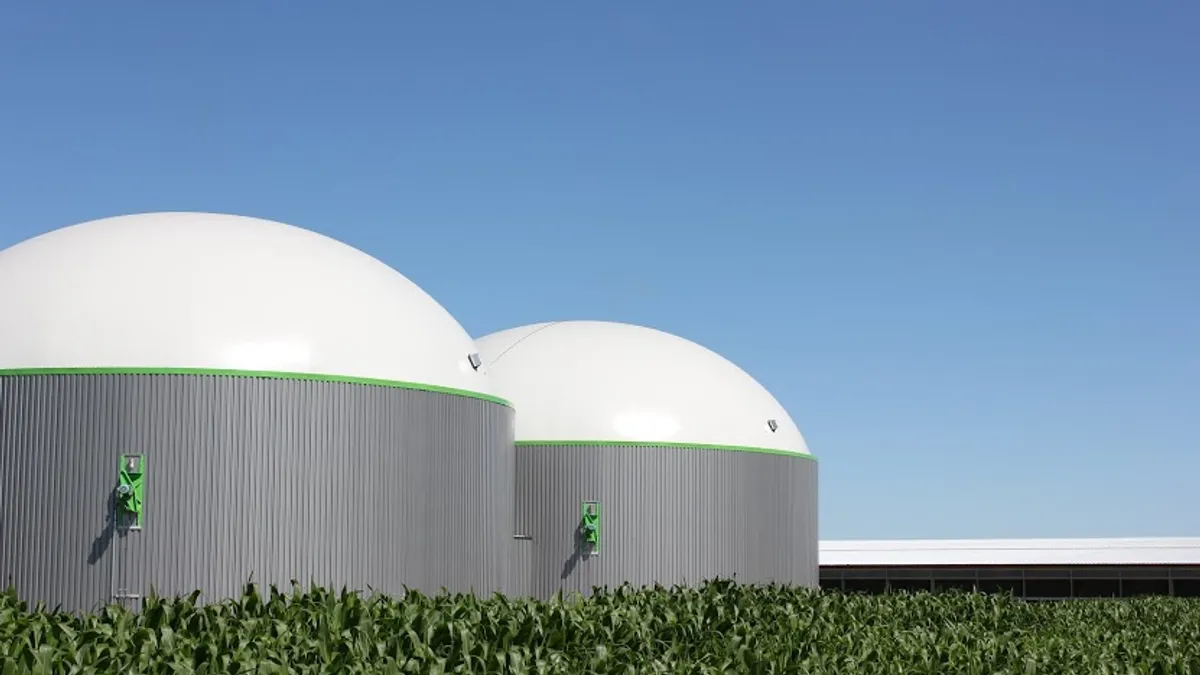Patrick Serfass is executive director of the American Biogas Council.
We all know that methane emissions pose a significant challenge to the climate. At the same time, there is a massive growing need for power. Yet few realize there is a single solution to address these two growing issues.
The North American Electric Reliability Corp. forecasts 78 GW of winter peak demand growth over the next 10 years. Two years ago, that figure stood at roughly 40 GW of forecasted growth. Individual reporting from utilities and grid operators also shows accelerating growth.
The Electric Reliability Council of Texas, the Texas grid operator, recently issued a long-term demand forecast showing 62 GW of peak demand growth by 2030. PJM Interconnection, the grid operator for 13 states in the mid-Atlantic and Washington, D.C., forecasts 25 GW of peak summer demand growth by 2034. In the Pacific Northwest, 8.5 GW of summer peak demand growth is expected, representing a 30% increase over 10 years. Bottom line: Americans will need a lot more electricity than we thought just a few years ago.
Meanwhile, landfills, agricultural waste, food waste and wastewater are emitting methane, which has contributed to nearly 30% of global warming since the Industrial Revolution.
Both of these are big problems with a relatively simple solution: build more biogas systems to recycle our waste into renewable electricity. Biogas systems route organic waste to anaerobic digesters, creating a pit stop in the existing waste handling process, where biological decomposition and methane release can be controlled. The methane is captured, and the remaining material upcycled.
But the benefits don’t stop there. The methane that biogas systems capture is an energy source. This methane, the same fuel that can fuel your hot water heater or stove, can be used instead of conventional natural gas, reducing the amount of fossil fuel we consume. It can also fuel trucks to deliver goods, heat manufacturing facilities and generate renewable electricity that’s put on the grid. Biogas systems are an efficient way to both address greenhouse gases and produce renewable fuel and electricity.
To help solve our grid load dilemma, the U.S. could produce at least 166 terawatt hours of renewable electricity just with the methane captured from biogas projects and recycling our organic waste.
What’s more, biogas provides the flexibility of natural gas, except with low, zero or even negative lifecycle carbon emissions depending on how much methane emissions the biogas system prevented. And because methane can be stored indefinitely in our gas pipeline system, biogas can provide both valuable baseload power to meet the continuous energy demand of a power grid as well as rapid deployment to meet peak demand.
There should be zero doubt that more biogas projects are needed and needed now. We have a lot of waste and emissions, and we need more renewable energy. To maximize deployment, every end use for biogas should be incentivized, ranging from renewable fuel programs and hydrogen production to renewable electricity generation. Myriad tax incentives are being considered today for these end uses, and nearly all of them undervalue or ignore the multifaceted benefits of this resource. Additional incentives supporting agricultural systems within the Farm Bill could also be deployed on a greater scale. Biogas projects have bipartisan support in Congress, providing benefits to rural, agricultural communities as equally as they provide climate and equity benefits.
In the fight against climate change, amid rapidly increasing demand for electricity, it’s rare to find a solution as simple, as elegant and as cost-effective as biogas systems.













